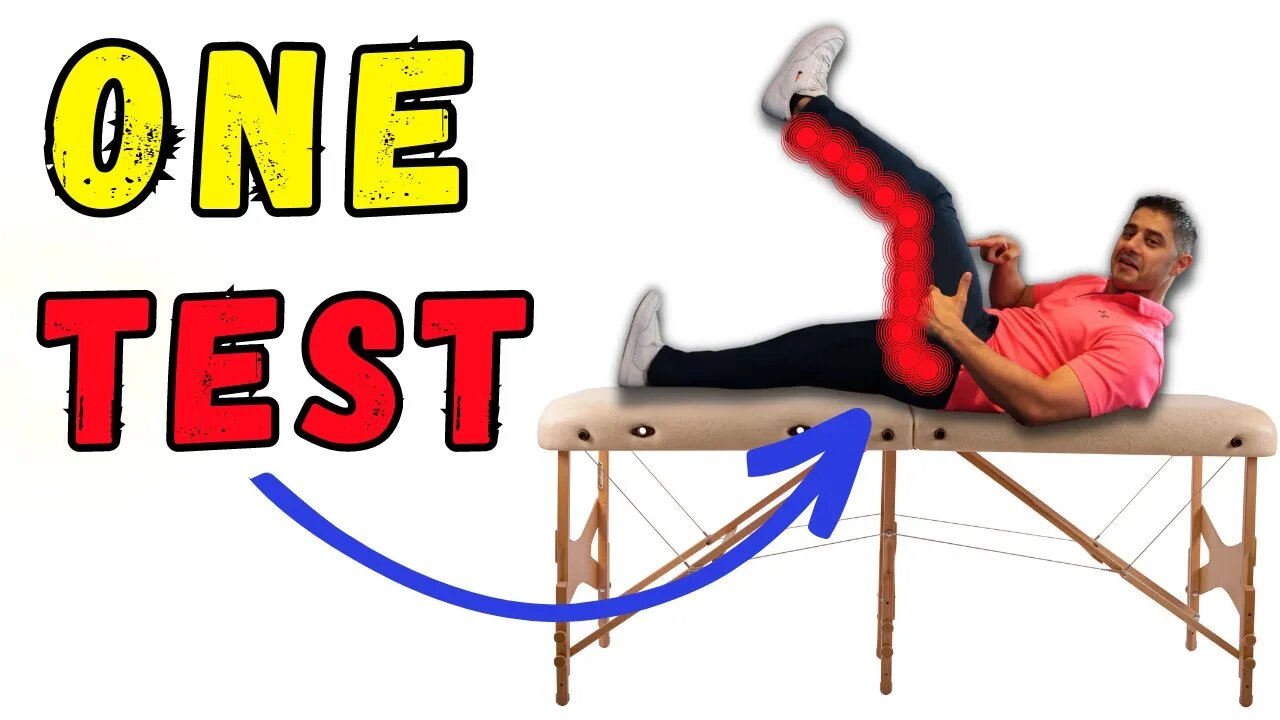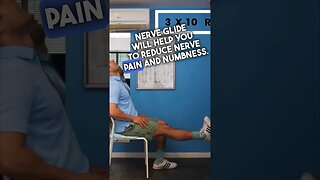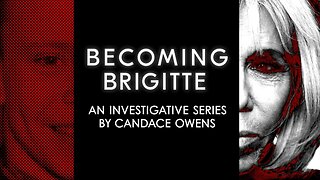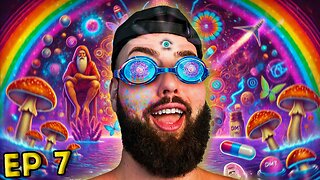Premium Only Content

Herniated disc test at home
Herniated disc test at home
The Straight Leg Raise (SLR) test is often used as a physical examination technique to assess lumbar disc bulges or herniations. It helps to determine if nerve impingement or irritation is present, particularly involving the sciatic nerve.
Lumbar radicular pain, also known as sciatica, refers to pain that radiates along the path of the sciatic nerve, which extends from the lower back down through the buttocks and into the leg. It is often caused by compression or irritation of the nerve roots in the lumbar spine. Here are some common signs and symptoms associated with lumbar radicular pain:
- Lower Back Pain: Lumbar radicular pain typically originates in the lower back or buttock region. It may be described as a dull, achy pain or a sharp, shooting pain.
- Radiating Leg Pain: The hallmark symptom of lumbar radicular pain is pain that radiates down the back of the leg. The pain can travel through the buttock, thigh, calf, and even reach the foot or toes. It is often described as a burning, tingling, or electric shock-like sensation.
- Numbness and Tingling: Along with pain, individuals with lumbar radicular pain may experience numbness or tingling sensations in the affected leg or foot. This numbness and tingling can be felt in specific areas or can affect a larger portion of the leg.
- Muscle Weakness: In more severe cases, lumbar radicular pain can lead to muscle weakness in the leg or foot. This can result in difficulty walking, decreased coordination, or an unstable feeling while standing.
- Worsening Symptoms: Certain movements or positions, such as bending forward, coughing, sneezing, or prolonged sitting, may exacerbate the pain and other symptoms associated with lumbar radicular pain. These activities can increase pressure on the affected nerve roots, leading to increased discomfort.
It's important to note that the severity and presentation of lumbar radicular pain can vary from person to person. It is always recommended to consult with a healthcare professional, such as a physical therapist for an accurate diagnosis and appropriate treatment plan. They can perform a thorough evaluation, which may include a physical examination and imaging studies, to determine the underlying cause of the radicular pain and develop an individualized management approach.
Here is couple of links that could helps
L4 L5 - L5 S1 best seated exercises
https://youtu.be/2f4fM8KP7FY
Sciatica pain relief in 5min
https://youtu.be/nEMxW8Z_CI4
4 mistakes you must avoid with chronic lower back pain,
https://youtu.be/LG_KCkKbe5g
sciatica nerve pain relief immediate effect
https://youtu.be/2ZOqtAm8LTw
Annular Tear L4L5 L5S1 Disc Bulges
https://youtu.be/qbnFdG_ZULY
Spinal stenosis cause, symptoms and rehabilitation routine
https://youtu.be/6BWJYA6eYwE
Ankylosing Spondylitis core exercises
https://youtu.be/Pf-cb5Akurs
𝐂𝐨𝐧𝐧𝐞𝐜𝐭 𝐰𝐢𝐭𝐡 𝐁𝐨𝐛 𝐚𝐭 𝐃𝐮𝐛𝐥𝐢𝐧 𝐒𝐩𝐨𝐫𝐭𝐬 𝐈𝐧𝐣𝐮𝐫𝐲 𝐂𝐥𝐢𝐧𝐢𝐜
-----------------------------------------------------------------------------
𝗕𝗼𝗼𝗸 𝘆𝗼𝘂𝗿 𝗼𝗻𝗹𝗶𝗻𝗲 𝗰𝗼𝗻𝘀𝘂𝗹𝘁𝗮𝘁𝗶𝗼𝗻 𝘄𝗶𝘁𝗵 𝘁𝗵𝗲 𝗹𝗶𝗻𝗸 𝗯𝗲𝗹𝗼𝘄:⭐⭐
https://dublinsportsinjuryclinic.com/book-appointment/
𝙛𝙤𝙡𝙡𝙤𝙬 𝙢𝙚 𝙤𝙣 𝙢𝙮 𝙨𝙤𝙘𝙞𝙖𝙡 𝙢𝙚𝙙𝙞𝙖 ⭐⭐
𝐈𝐍𝐒𝐓𝐀𝐆𝐑𝐀𝐌 → https://www.instagram.com/dublin_spor...
𝐅𝐀𝐂𝐄𝐁𝐎𝐎𝐊 → https://www.facebook.com/dublinphysic...
𝐖𝐄𝐁𝐒𝐈𝐓𝐄→ https://www.dublinsportsinjuryclinic.com
#l4l5 #L5S1 #discbulges #spinalstenosis #l4l5 #discbulges #sciaticatretament #sciaticapainrelief #sciatica #bamboospine
#spinalstenosis #spinalstenositreatment #spinallumbarstenosis #AnkylosingSpondylitis
-
 0:56
0:56
Bob The Physio
1 year ago $0.03 earnedSciatica Pain relief in 5min min #discbulges #sciaticasymptoms #sciaticapainrelief #nervepainrelief
1271 -
 58:00
58:00
The StoneZONE with Roger Stone
8 hours agoEuropean Leaders Resist Trump Peace Overtures To Their Own Demise | The StoneZONE w/ Roger Stone
73.3K12 -
 9:29
9:29
AlaskanBallistics
9 hours ago $7.25 earnedWyoming Suppressors and Rifles at Shot Show 2025
82.6K4 -
 1:06:40
1:06:40
Donald Trump Jr.
13 hours agoThe Left is Taking one L After Another, Live with Michael Knowles | Triggered Ep. 217
175K113 -
 47:17
47:17
Kimberly Guilfoyle
13 hours agoWoke Gets DOGE’d, Live with AJ Rice & Jarrett Stepman | Ep. 197
129K43 -
 20:11
20:11
Candace Show Podcast
12 hours agoBecoming Brigitte: Candace Owens x Xavier Poussard | Ep 6
193K331 -
 8:25:38
8:25:38
Dr Disrespect
16 hours ago🔴LIVE - DR DISRESPECT - ELDEN RING DLC - REVENGE
194K22 -
 54:22
54:22
LFA TV
1 day agoThe End of the Trans-Atlantic Alliance | TRUMPET DAILY 2.17.25 7PM
50.2K7 -
 55:56
55:56
BIG NEM
15 hours agoUGLY COCO: The Rapper Who’s Tried EVERY PSYCHEDELIC 🌌
22.6K1 -
 1:42:51
1:42:51
2 MIKES LIVE
13 hours ago2 MIKES LIVE #181 Deep Dive Monday!
26.8K3